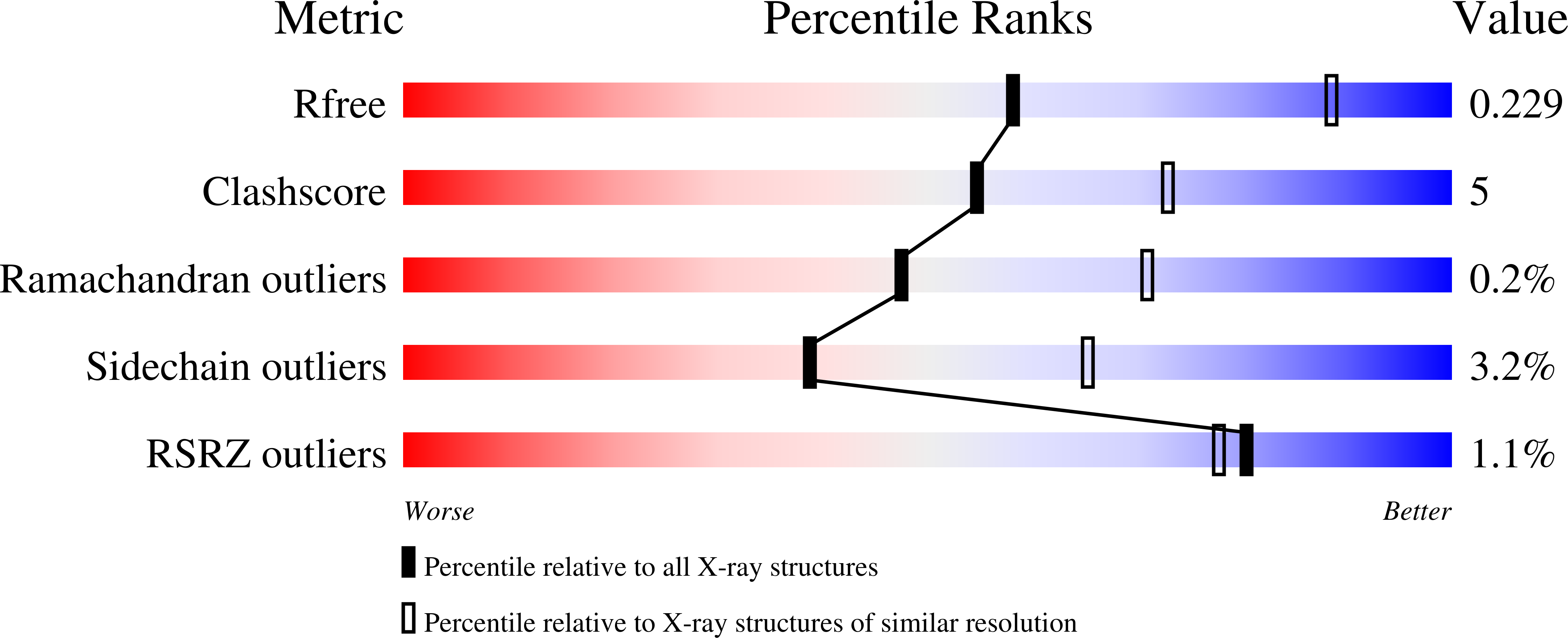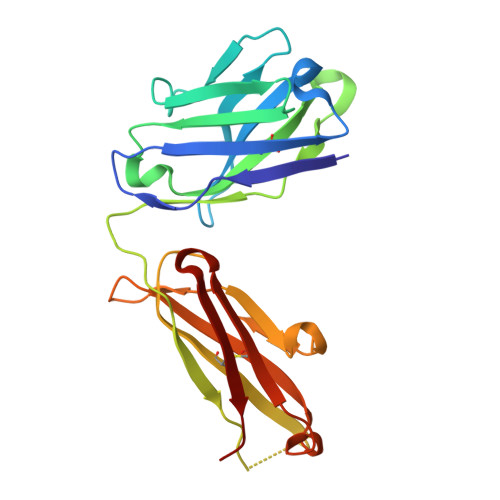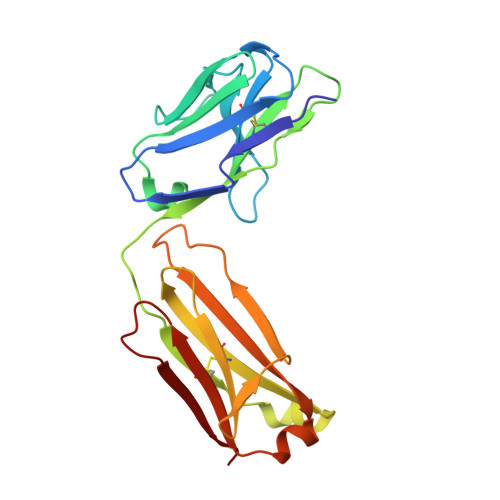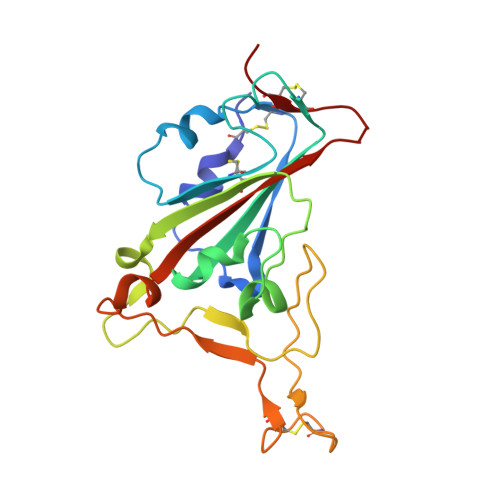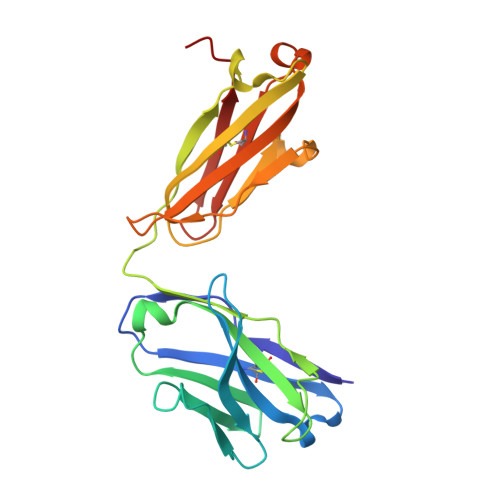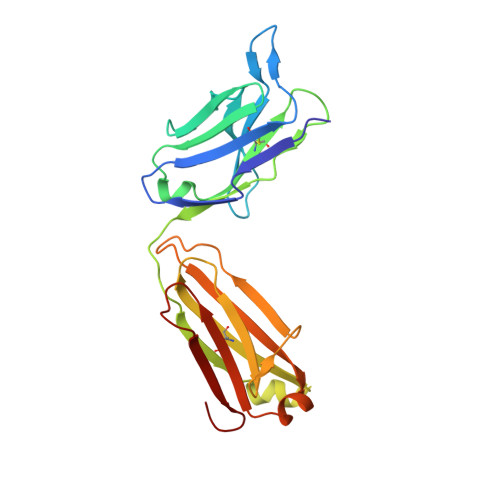Affinity maturation of SARS-CoV-2 neutralizing antibodies confers potency, breadth, and resilience to viral escape mutations.
Muecksch, F., Weisblum, Y., Barnes, C.O., Schmidt, F., Schaefer-Babajew, D., Wang, Z., C Lorenzi, J.C., Flyak, A.I., DeLaitsch, A.T., Huey-Tubman, K.E., Hou, S., Schiffer, C.A., Gaebler, C., Da Silva, J., Poston, D., Finkin, S., Cho, A., Cipolla, M., Oliveira, T.Y., Millard, K.G., Ramos, V., Gazumyan, A., Rutkowska, M., Caskey, M., Nussenzweig, M.C., Bjorkman, P.J., Hatziioannou, T., Bieniasz, P.D.(2021) Immunity 54: 1853-1868.e7
- PubMed: 34331873
- DOI: https://doi.org/10.1016/j.immuni.2021.07.008
- Primary Citation of Related Structures:
7N3E, 7N3F, 7N3G, 7N3H, 7N3I, 7R8L, 7R8M, 7R8N, 7R8O - PubMed Abstract:
Antibodies elicited by infection accumulate somatic mutations in germinal centers that can increase affinity for cognate antigens. We analyzed 6 independent groups of clonally related severe acute respiratory syndrome-coronavirus-2 (SARS-CoV-2) Spike receptor-binding domain (RBD)-specific antibodies from 5 individuals shortly after infection and later in convalescence to determine the impact of maturation over months. In addition to increased affinity and neutralization potency, antibody evolution changed the mutational pathways for the acquisition of viral resistance and restricted neutralization escape options. For some antibodies, maturation imposed a requirement for multiple substitutions to enable escape. For certain antibodies, affinity maturation enabled the neutralization of circulating SARS-CoV-2 variants of concern and heterologous sarbecoviruses. Antibody-antigen structures revealed that these properties resulted from substitutions that allowed additional variability at the interface with the RBD. These findings suggest that increasing antibody diversity through prolonged or repeated antigen exposure may improve protection against diversifying SARS-CoV-2 populations, and perhaps against other pandemic threat coronaviruses.
Organizational Affiliation:
Laboratory of Retrovirology, The Rockefeller University, New York, NY 10065, USA.







